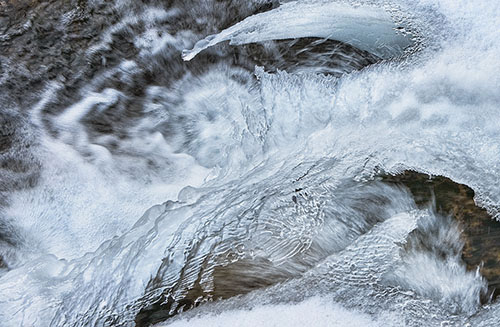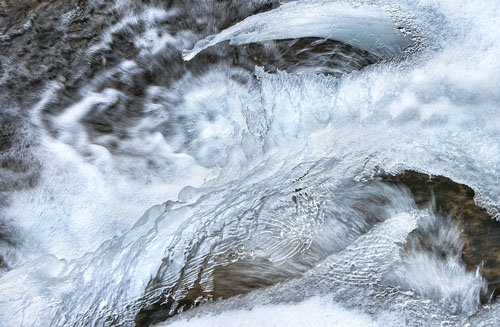It can be hard to nail down highlights - they look
good on screen then print muddy. it’s all relative. On screen
highlights are judged next to the darker parts of the image, while
on paper, they are compared to the white of the paper border. The result
is often either muddy highlights or making a lot of reprints.
It’s
handy to be able to see just exactly where your highlights are in
the image. The histogram is of some help but can’t tell
you how close to white a particular part of the image is. Using LightZone
would be one way to solve the problem but I prefer to edit my images ‘freehand’ rather
than making print area selections so that isn’t an option for
me.
Here’s what I do
In Photoshop, create a new action (using the
little triangle at the top right of the actions palette). Name it
Highlights 250 (trust
me on this
one). Now that you are recording, go down to the layers palette
and select threshold and when it comes up, set the threshold to 250.
Now set the
layer opacity slider (top right in the layers palette) to about
85%.
next double click on the name of the new layer you just added and
change it to Highlight 250. Go back to the actions palette menu
and ‘stop
recording’.
Note by the editor: I learned this invaluable technique
from George but use an opacity of 50% (matter of taste).
What you have done is to create a top layer which
shows the underneath image as a very dark version of itself (only
15% showing through).
You have arranged so that the threshold layer shows bright only
those tones
in the image which have an 8 bit density level of 250 out of
255 (0 is black, 255 pure white).
How you use this is in two ways.
You can judge your highlights
as they are now - if none of them show up bright, then it means
that nowhere in your image do you
have any
tones brighter than 250 so your print will have absolutely no
pure white. That
might be what you wanted, but perhaps not. More likely you wanted
some highlights to approach pure white but just kiss it, not
overwhelm it.

Picture before dodge/burn

Threshold view of the above picture
What you can now do is either dodge the underneath
image or create a new layer to fit between the image layer(s) and
the threshold
layer just
created which lightens the highlights. It could be a curves
or levels layer or even a blending layer of some type (I prefer
using dodge
highlights on a copy of the original image as a separate layer
so I can always
tone down the dodging by using a mask).
Note that my strong
preference is to do general image editing with masked curves layers
working in the mask and only do dodging
and
burning as
the very last step to fine tune the image so I’m using
this threshold layer trick after most of the image editing
has been done.
I now ‘stroke’ my highlight areas
in the copied image layer with my mouse until they just break
through the 250 barrier and show
up as bright on screen. It’s possible to really make
an image ‘pop’ this
way. I have taken images photographed in completely flat
light and added highlights to rock edges, corners, etc.

Picture after dodge/burn

Threshold view of the above picture
I
will turn off the threshold layer intermittently to see how
the image is coming, but don’t be too surprised if
your highlights look too bright on screen - test the effect
by making a print. When finished with
the dodging, I simply turn off the threshold layer with it’s
check box to the left in the layers palette and flatten the
image.
You can modify this action to suit your printing style.
You might find that a value different from 250 is needed
- perhaps
with
your printer
250 is already printed as pure white and you’d be better
with a lower number. Perhaps your printer is really good
at printing subtle
highlights and can differentiate 250 from 255 pure white
quite easily in which case you might select 253 for your
cutoff.
If you’d prefer more of the underlying image
to show through to make seeing where to dodge easier, then
change that opacity slider to
a lower percentage.
You can make a similar action for shadows
in which the whole image will be pale gray and the dark shadows
showing their
real darkness.
In this
case, I set the level somewhere around 10 to 20 depending
on the printer and paper I’m using.
As a final trick,
make a keyboard shortcut for the action so a single keystroke
will enable it.
|